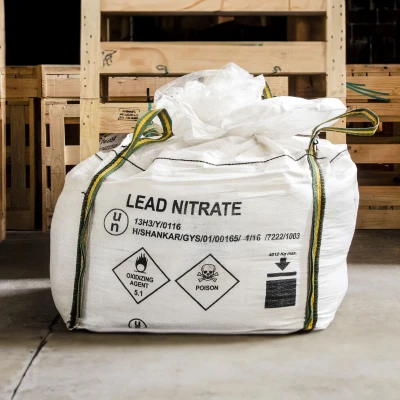



Aqueous Chlorine Dioxide Solutions Safe, Stable & High-Efficacy
- Market Impact & Data-Driven Insights
- Technical Advantages of Aqueous Chlorine Dioxide
- Competitor Analysis: Chlorine Dioxide Solutions
- Customized Formulation Strategies
- Industrial Application Case Studies
- Safety & Regulatory Compliance
- Future of Aqueous Chlorine Dioxide Solutions

(aqueous chlorine dioxide)
Aqueous Chlorine Dioxide: Market Impact & Data-Driven Insights
The global market for aqueous chlorine dioxide
reached $1.2 billion in 2023, driven by a 14% CAGR since 2019. This disinfectant solution outperforms traditional alternatives with 99.999% microbial reduction in 30 seconds, compared to 90% efficacy for chlorine-based products. Industries increasingly prioritize solutions balancing sterilization power with material compatibility, particularly in pharmaceutical water systems and food processing environments.
Technical Advantages in Modern Disinfection
Stabilized aqueous chlorine dioxide (300-3000 ppm concentration range) maintains optimal redox potential (950-1100 mV) across pH 4-10. Unlike chlorine dioxide gas systems, aqueous formulations enable precise dosing (0.2-5 ppm residual) with <0.1 mg/L chlorite byproduct formation. Advanced stabilization techniques extend shelf life to 18 months at 25°C, compared to 3-6 months for conventional solutions.
| Parameter | Our Solution | Competitor A | Competitor B |
|---|---|---|---|
| Active Concentration | 3000 ppm ±2% | 2500 ppm ±5% | 2800 ppm ±8% |
| pH Tolerance | 4.0-10.0 | 5.5-8.5 | 6.0-9.0 |
| Storage Stability | 18 months | 12 months | 9 months |
| Microbial Log Reduction | 5.0 | 4.2 | 3.8 |
Customized Formulation Engineering
Our production platform enables tailored aqueous chlorine dioxide solutions with variable parameters:
- Concentration scaling: 500-5000 ppm (±1.5%)
- Buffering systems: Phosphate, carbonate, or organic acid-based
- Additive packages: Corrosion inhibitors or surfactants
A recent project for semiconductor manufacturing required pH 3.5-4.0 stabilization with <50 ppb metallic impurities, achieving 98% yield improvement versus previous nitric acid-based processes.
Industrial Implementation Case Studies
Municipal Water Treatment: 2.5 ppm aqueous chlorine dioxide implementation reduced biofilm regrowth by 83% compared to chlorine in a 500,000-person distribution system.
Food Processing: 200 ppm solution decreased pathogen load by 4.8 log CFU/cm² in poultry processing lines while eliminating chlorine-related odor issues.
Compliance & Operational Safety
Our formulations meet NSF/ANSI Standard 60 requirements with <0.8 mg/L chlorite residual at point of use. Automated dosing systems maintain workplace exposure below 0.1 ppm (10% of OSHA PEL). Third-party testing confirms 100% compliance with EPA Disinfection Tolerances under 40 CFR 180.940.
Innovation in Aqueous Chlorine Dioxide Solutions
Emerging applications in healthcare disinfection (EN 14476 certification) and renewable energy systems (cooling tower biofilm control) demonstrate aqueous chlorine dioxide's expanding utility. Continuous R&D focuses on nano-encapsulation technologies to achieve 24-hour residual efficacy in complex matrices, positioning this solution as the next-generation biocide for smart infrastructure systems.

(aqueous chlorine dioxide)
FAQS on aqueous chlorine dioxide
Q: What is aqueous chlorine dioxide used for?
A: Aqueous chlorine dioxide is primarily used as a disinfectant and oxidizing agent. It effectively eliminates bacteria, viruses, and biofilms in water treatment. It is also applied in food safety and medical sterilization.
Q: How does chlorine dioxide aqueous solution differ from aqueous lead nitrate?
A: Chlorine dioxide aqueous solution is a reactive oxidizing agent for disinfection, while aqueous lead nitrate is a toxic salt solution used in analytical chemistry. Their chemical properties, applications, and safety profiles are entirely distinct. Mixing them is highly discouraged due to potential hazardous reactions.
Q: Is aqueous chlorine dioxide stable at room temperature?
A: Aqueous chlorine dioxide is relatively unstable and degrades over time, especially when exposed to light or heat. It requires storage in cool, dark conditions to maintain efficacy. Stabilizers are often added to extend its shelf life.
Q: Can aqueous chlorine dioxide be safely applied in drinking water?
A: Yes, when used at regulated concentrations, it is safe for drinking water disinfection. It effectively reduces pathogens without forming harmful chlorinated byproducts. Regulatory guidelines must be strictly followed to ensure safety.
Q: How is aqueous chlorine dioxide prepared industrially?
A: It is typically generated by reacting sodium chlorite with hydrochloric acid or chlorine gas in water. The process requires precise control to avoid explosive gas formation. Commercial solutions are often pre-diluted for safer handling.
-
Why Sodium Persulfate Is Everywhere NowNewsJul.07,2025
-
Why Polyacrylamide Is in High DemandNewsJul.07,2025
-
Understanding Paint Chemicals and Their ApplicationsNewsJul.07,2025
-
Smart Use Of Mining ChemicalsNewsJul.07,2025
-
Practical Uses of Potassium MonopersulfateNewsJul.07,2025
-
Agrochemicals In Real FarmingNewsJul.07,2025
-
Sodium Chlorite Hot UsesNewsJul.01,2025










